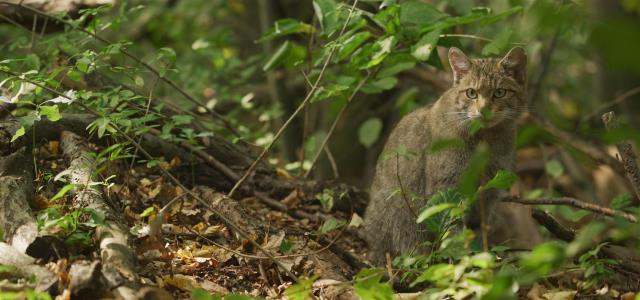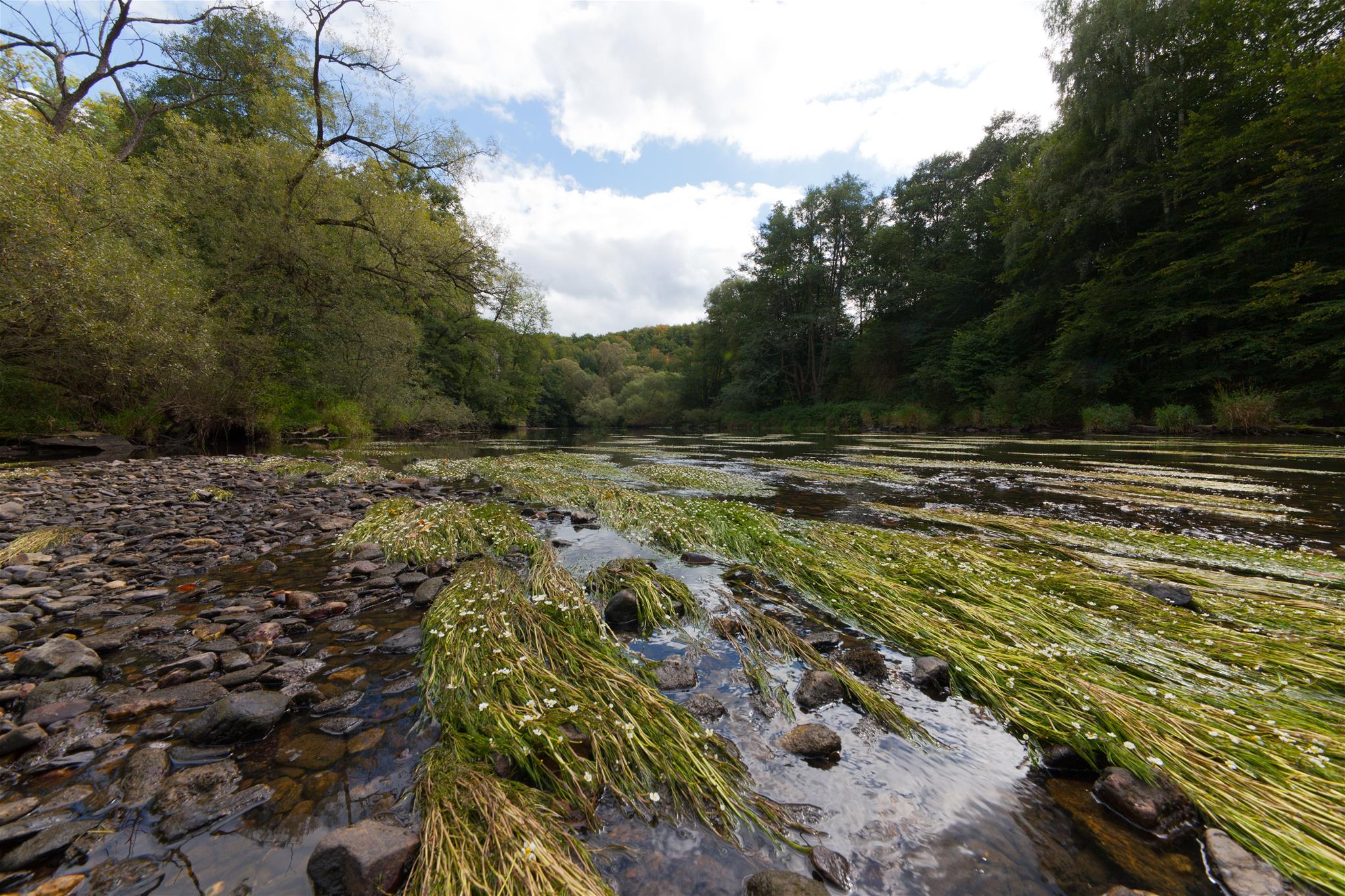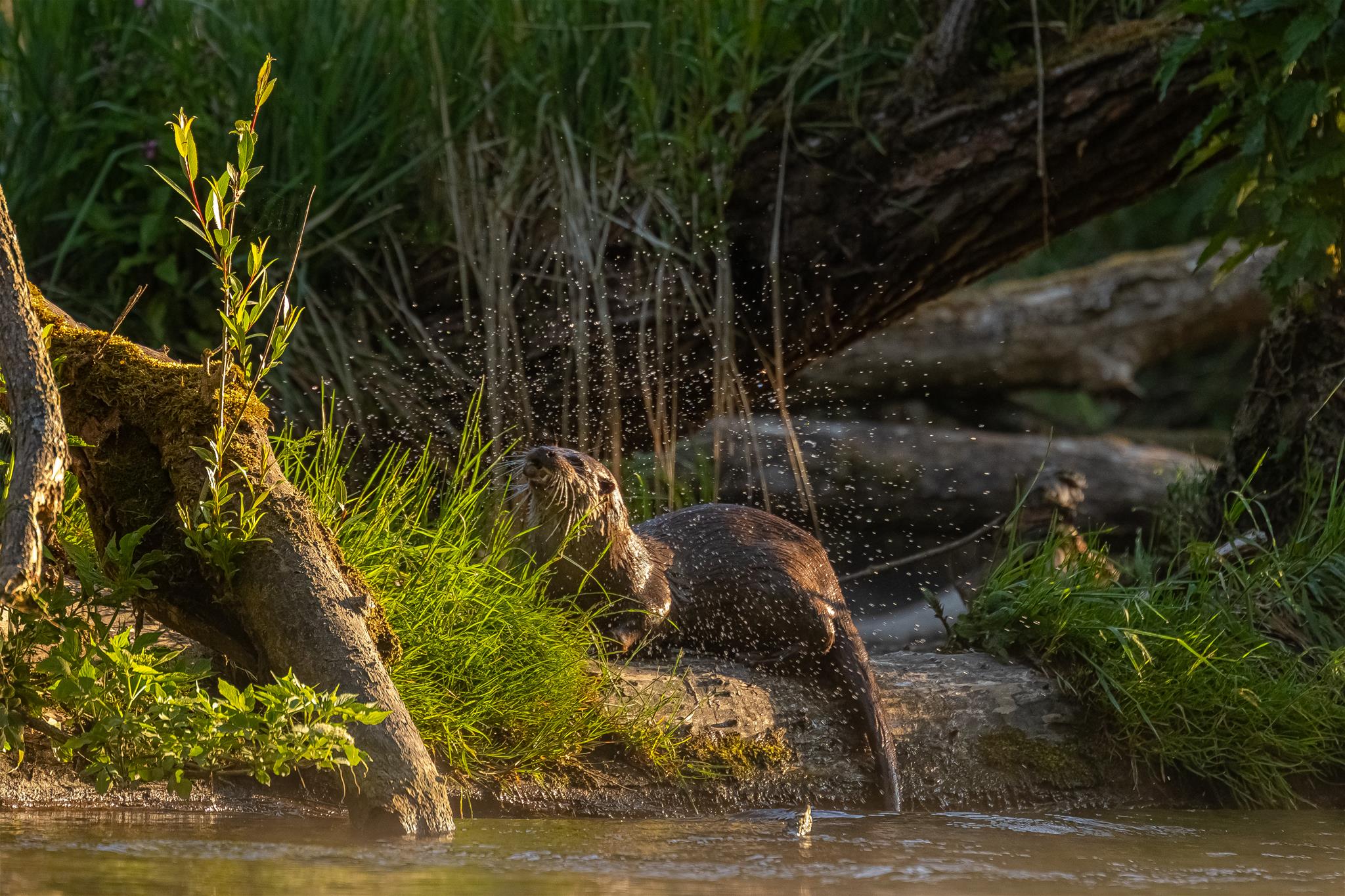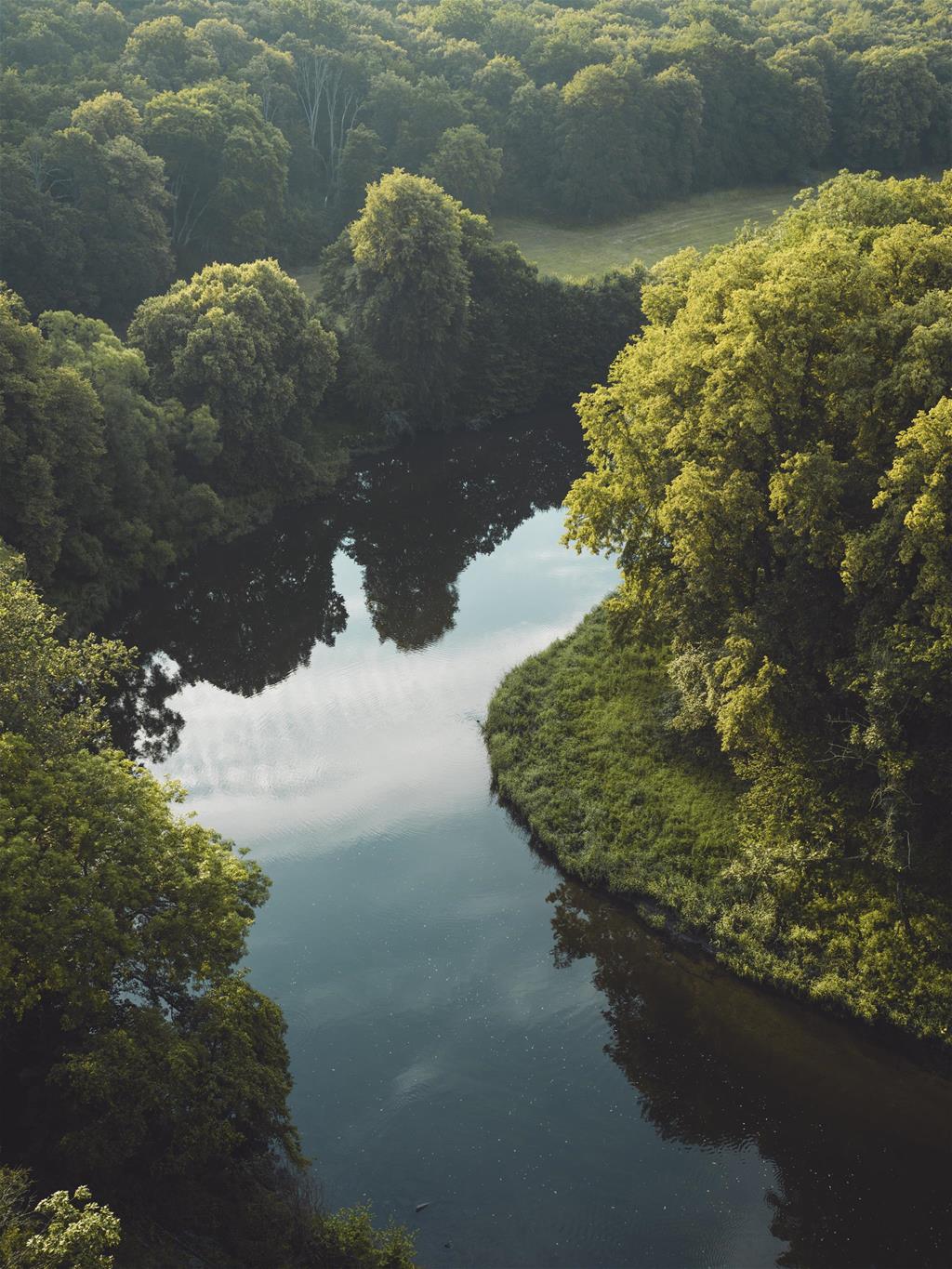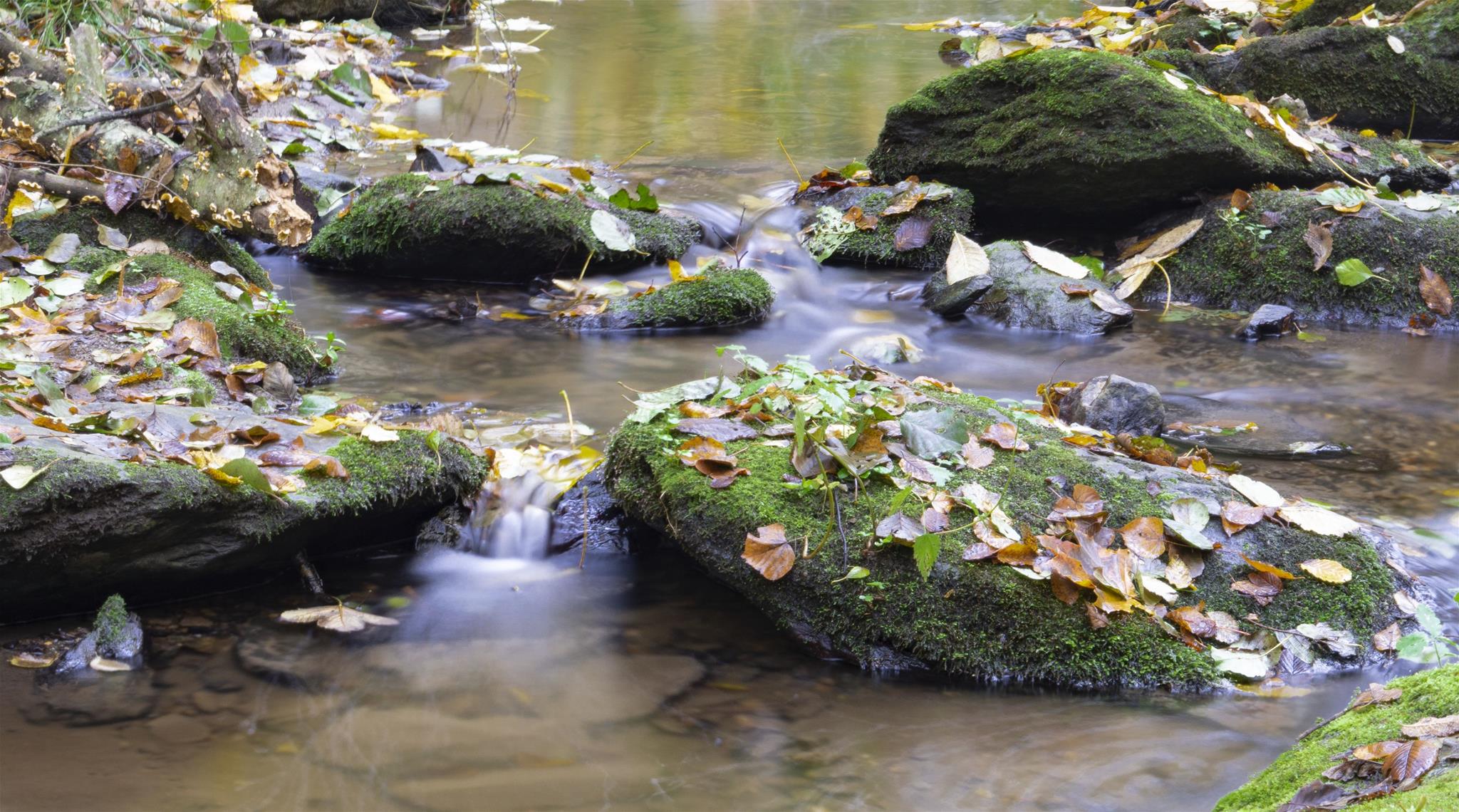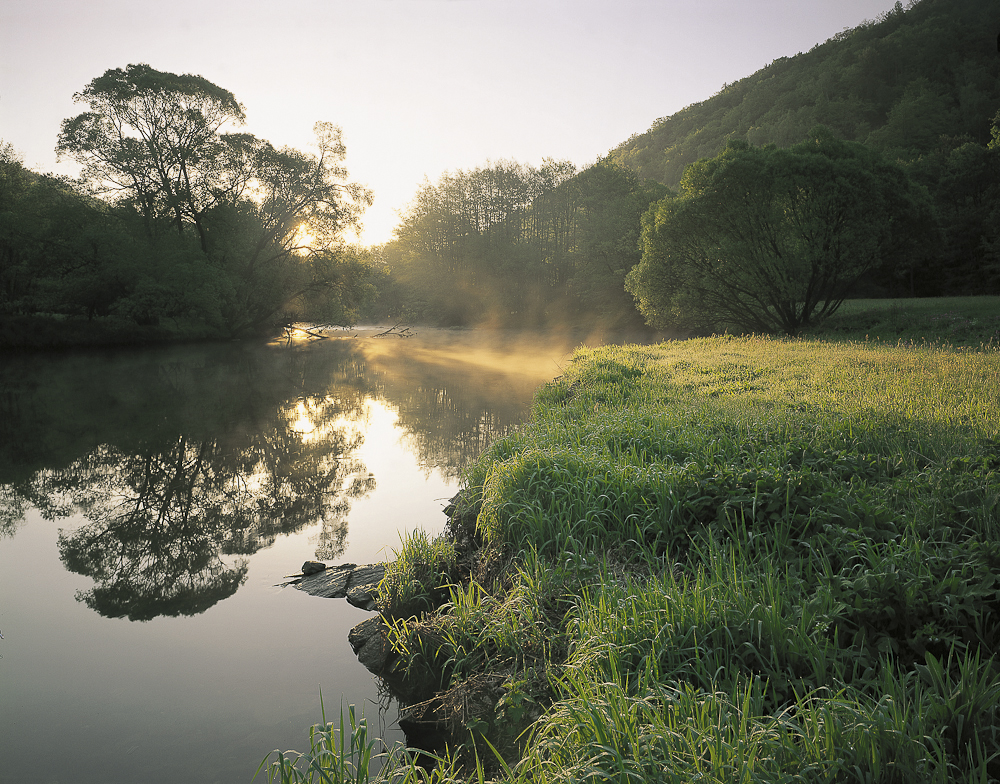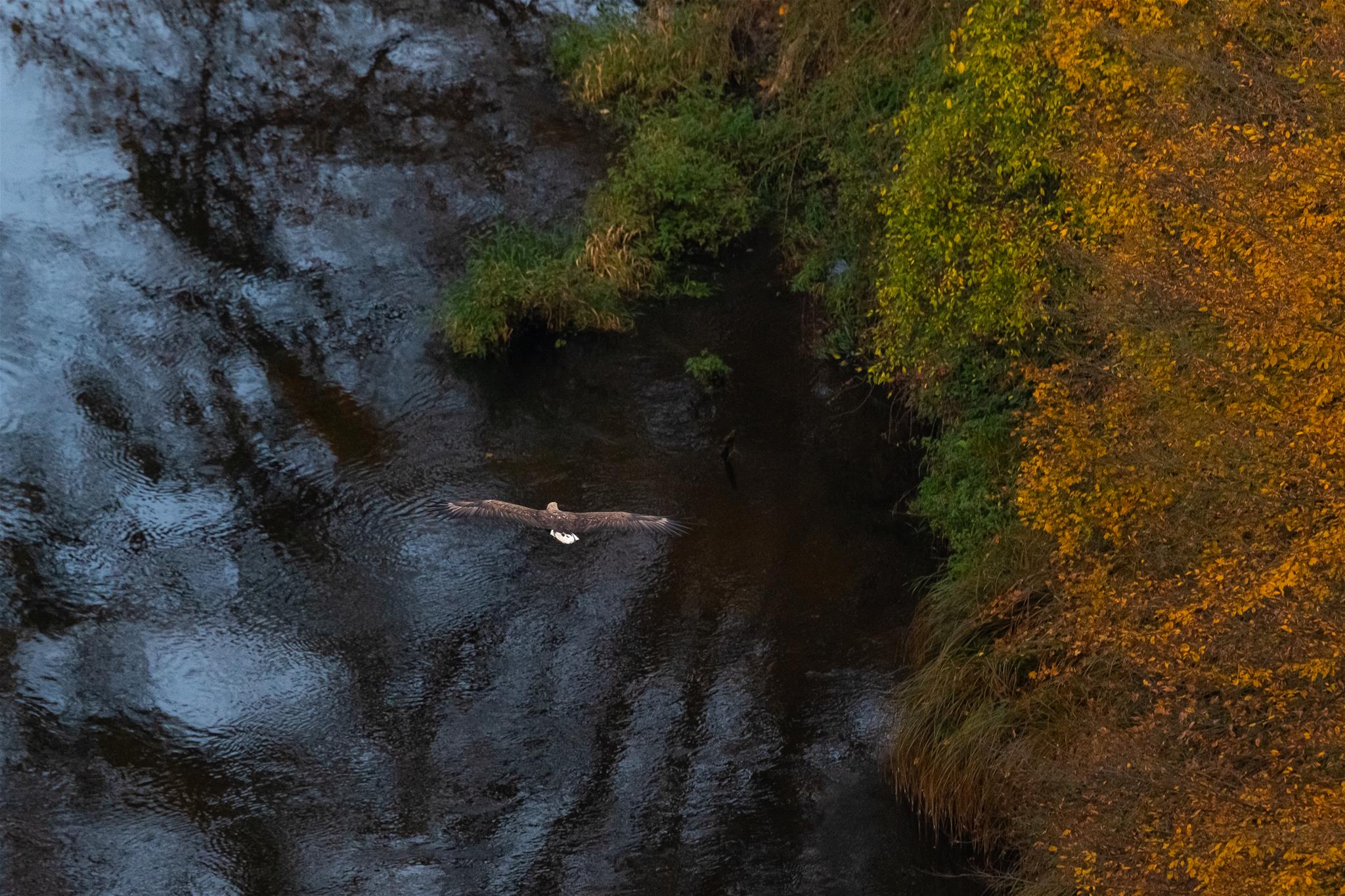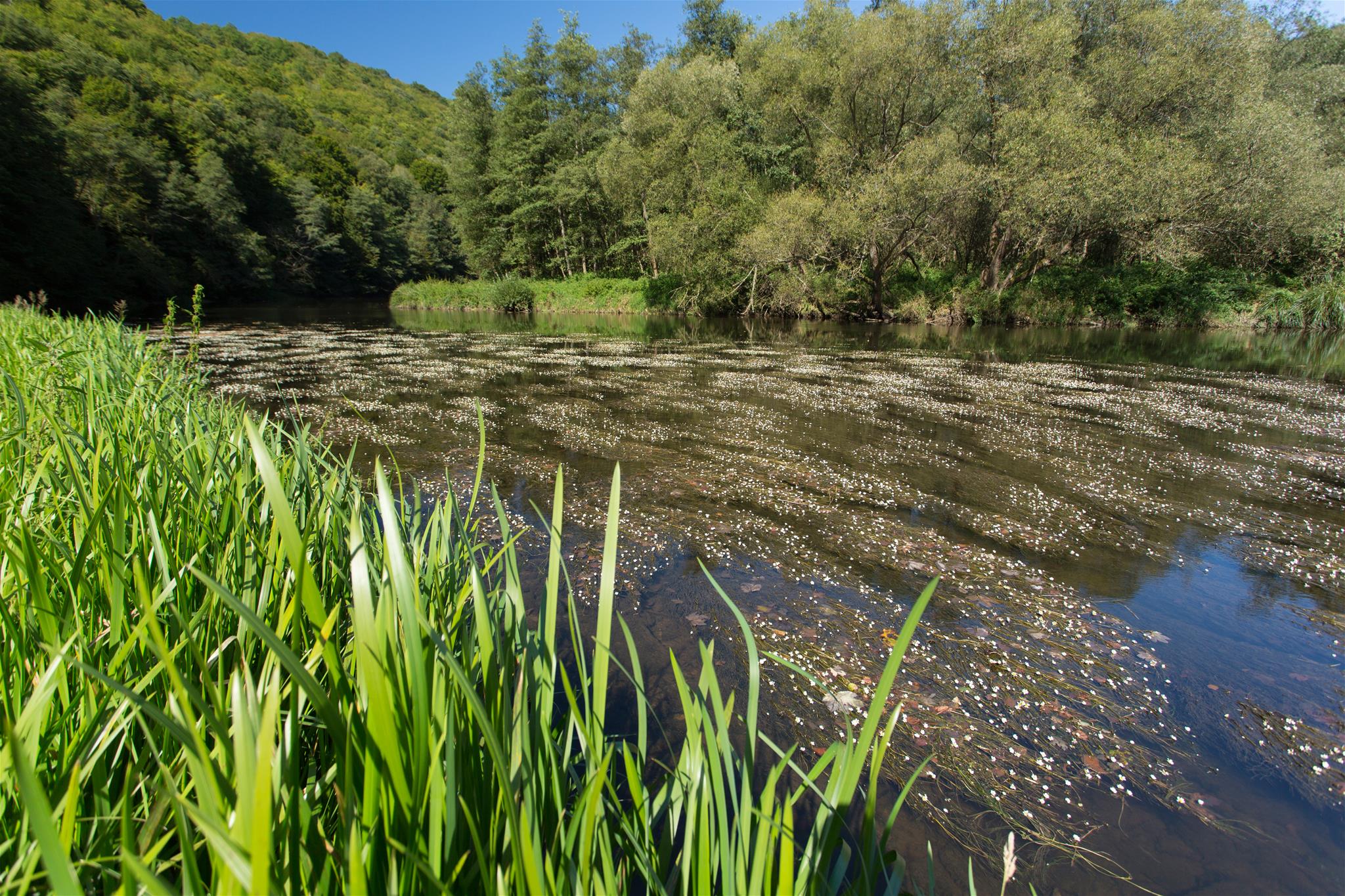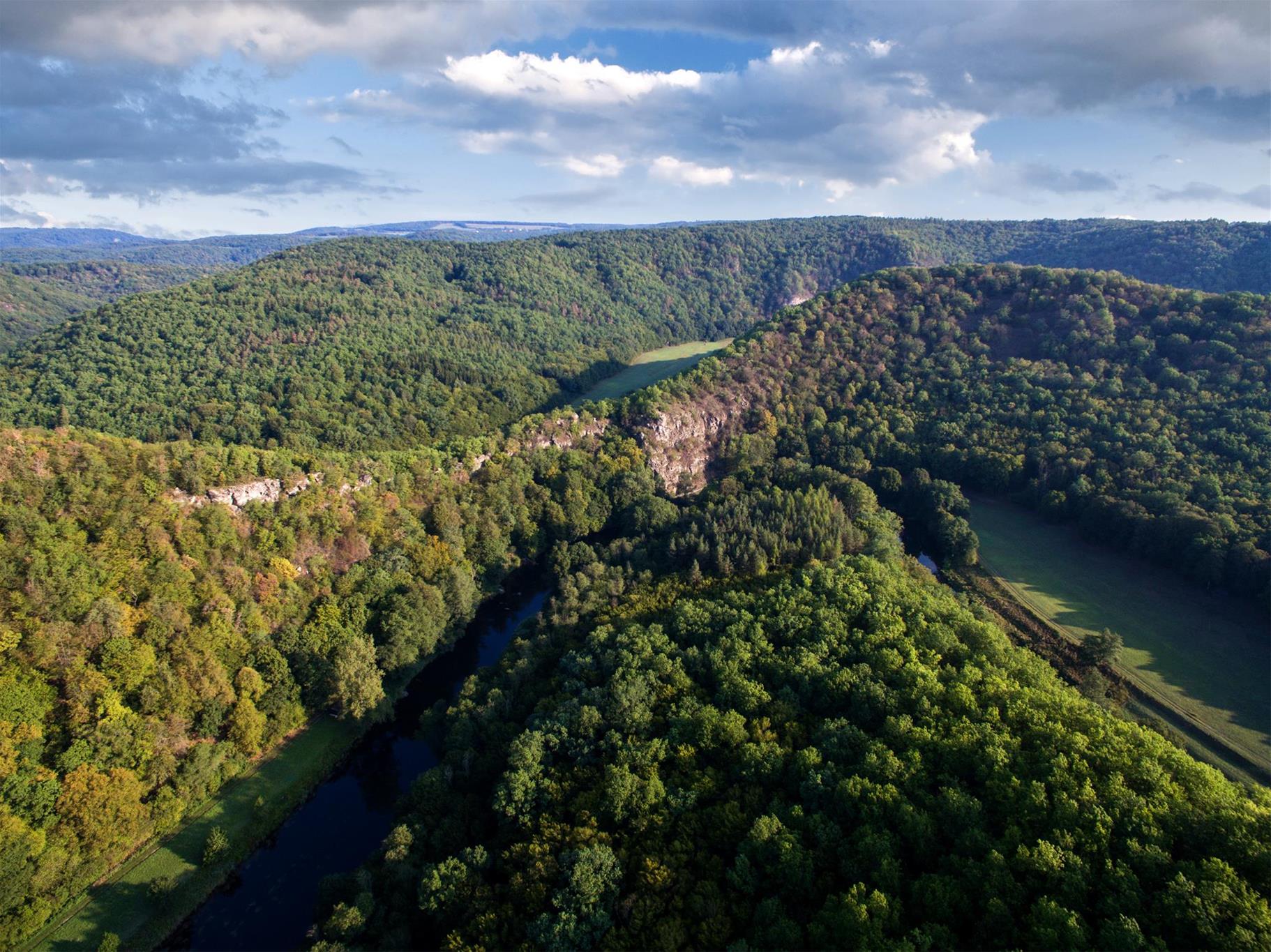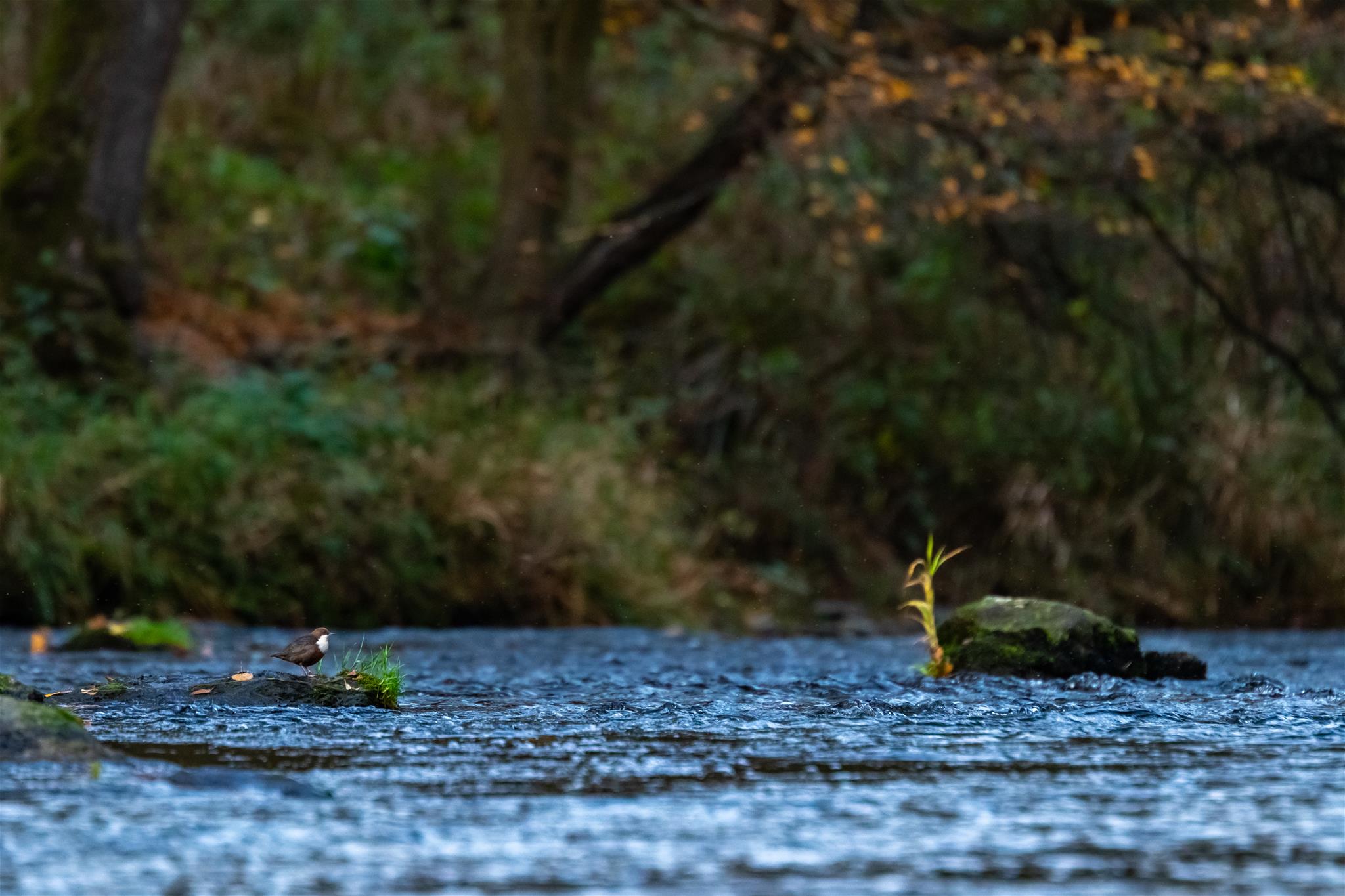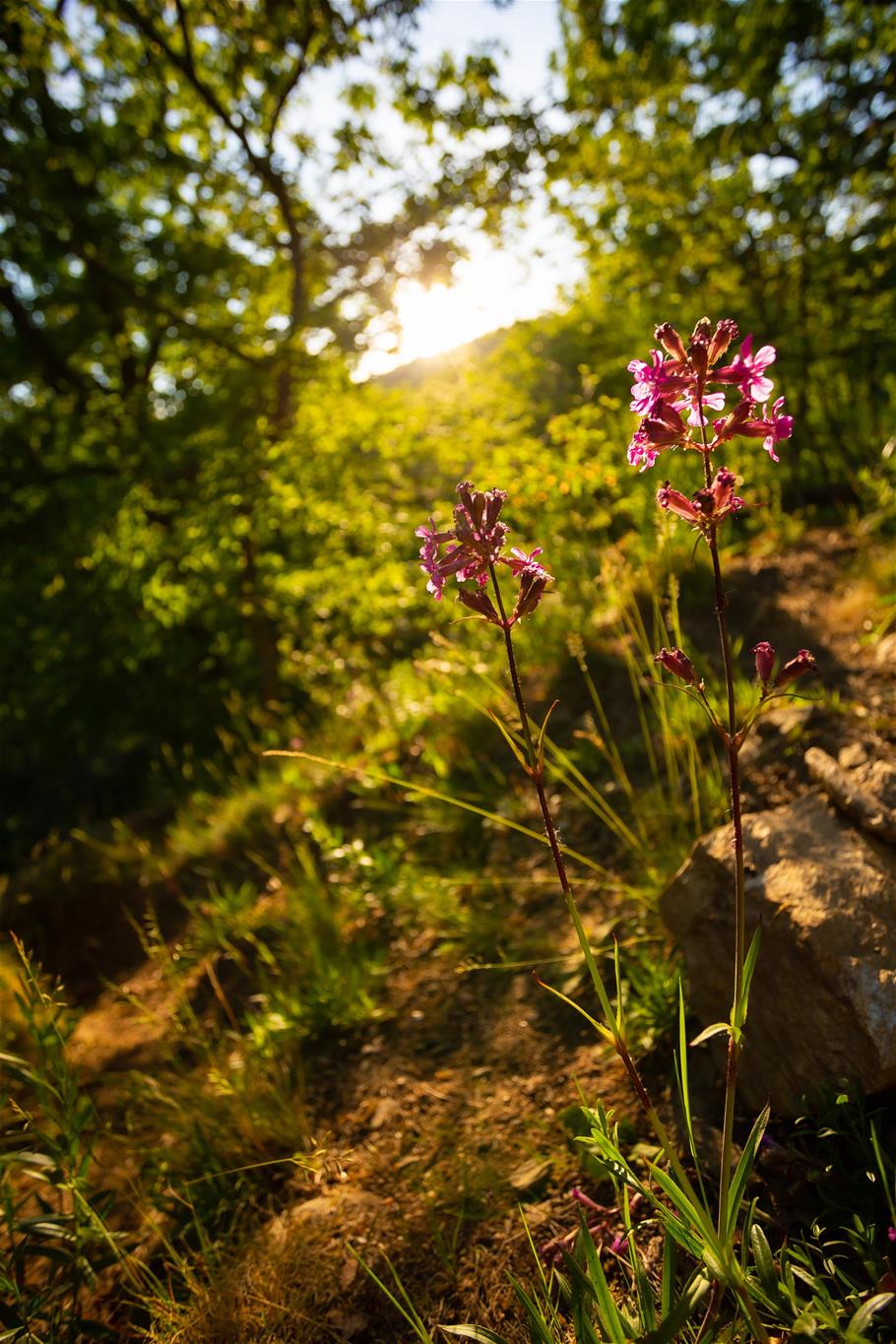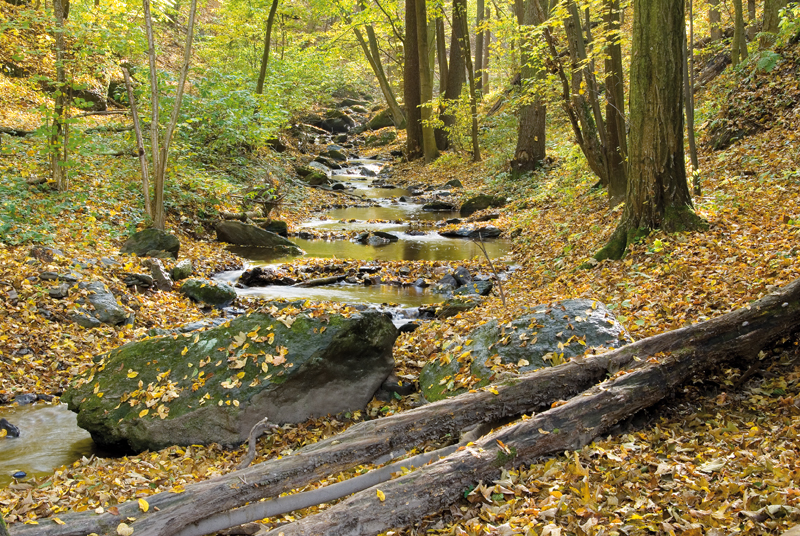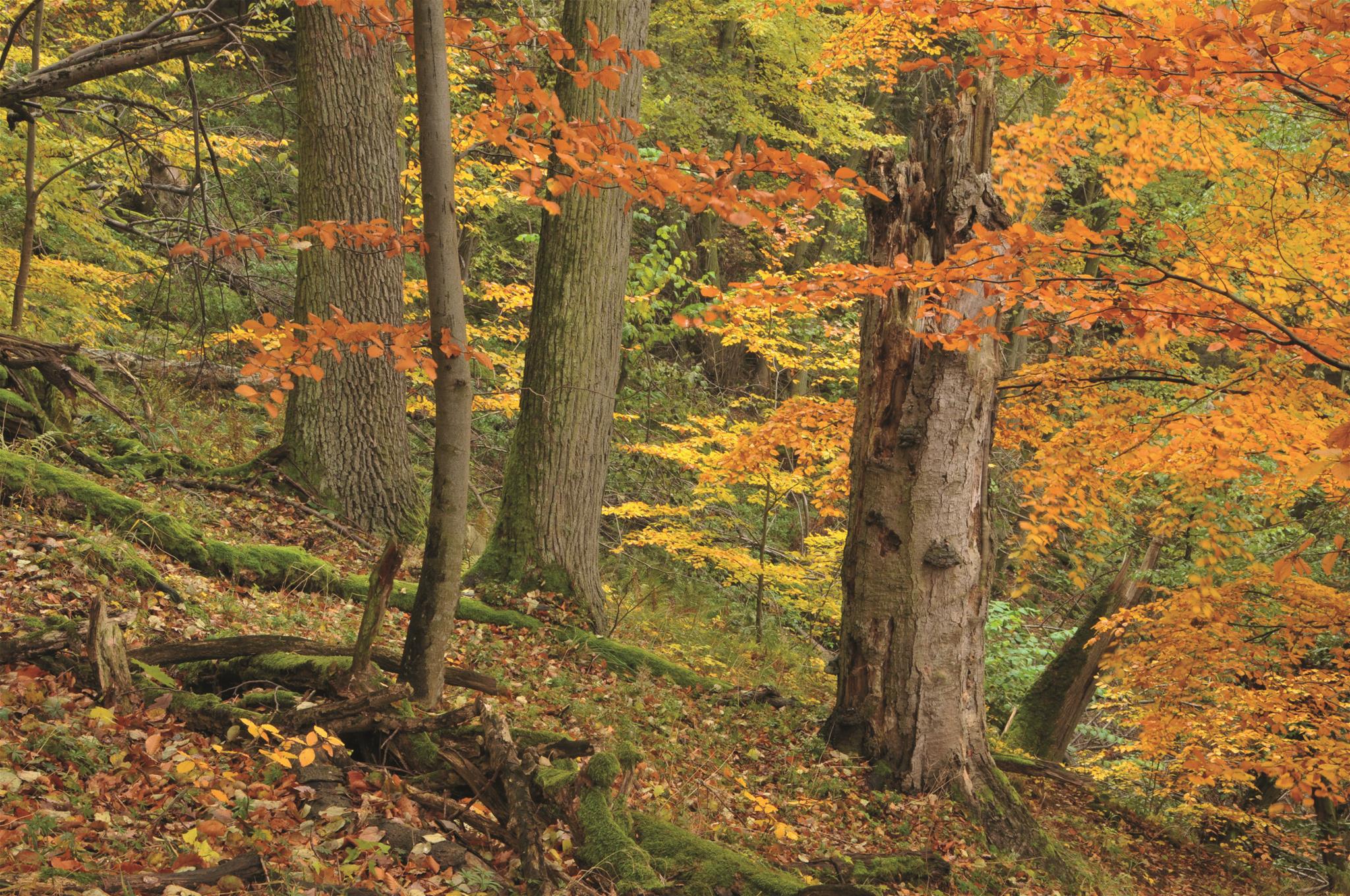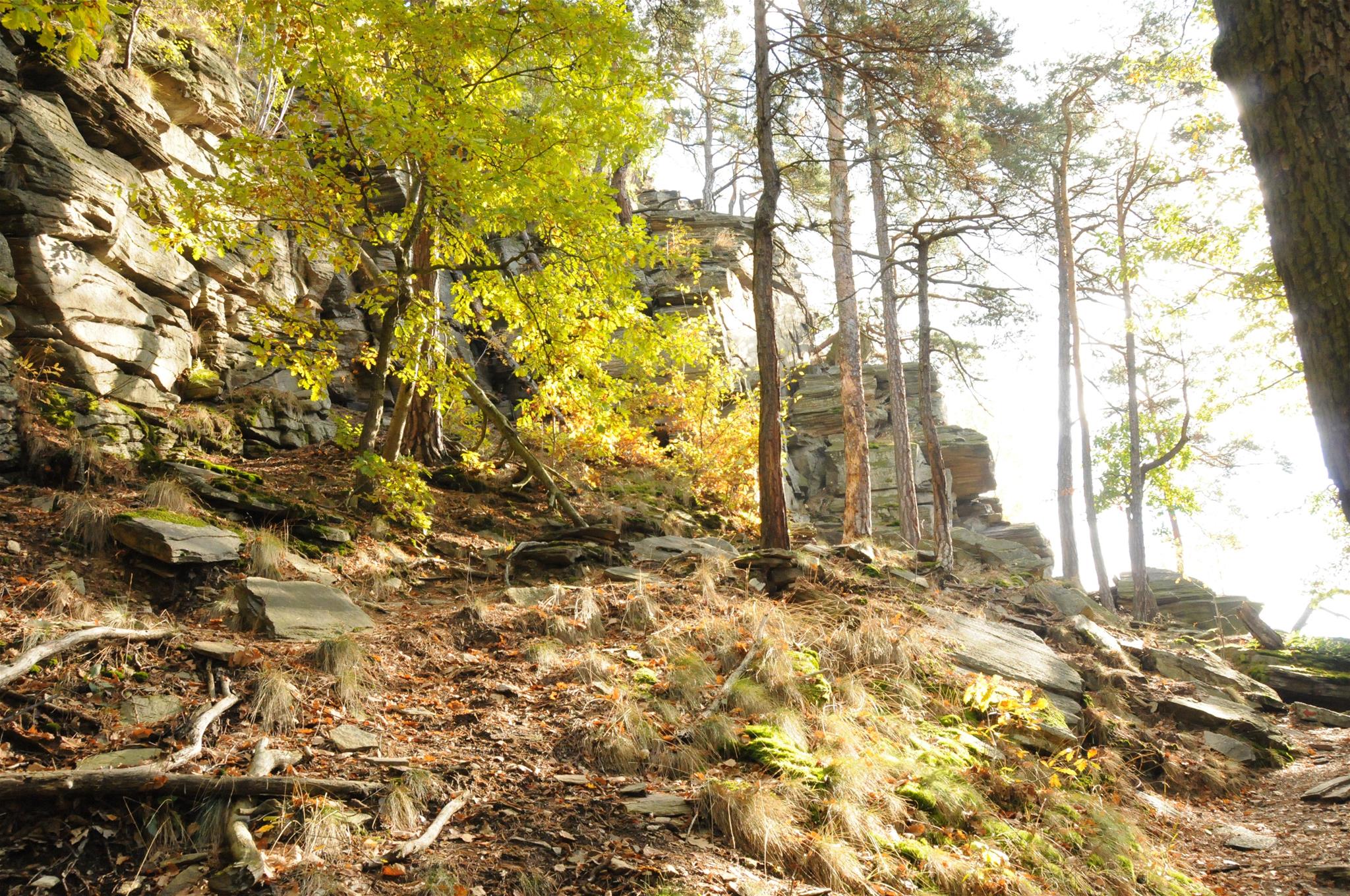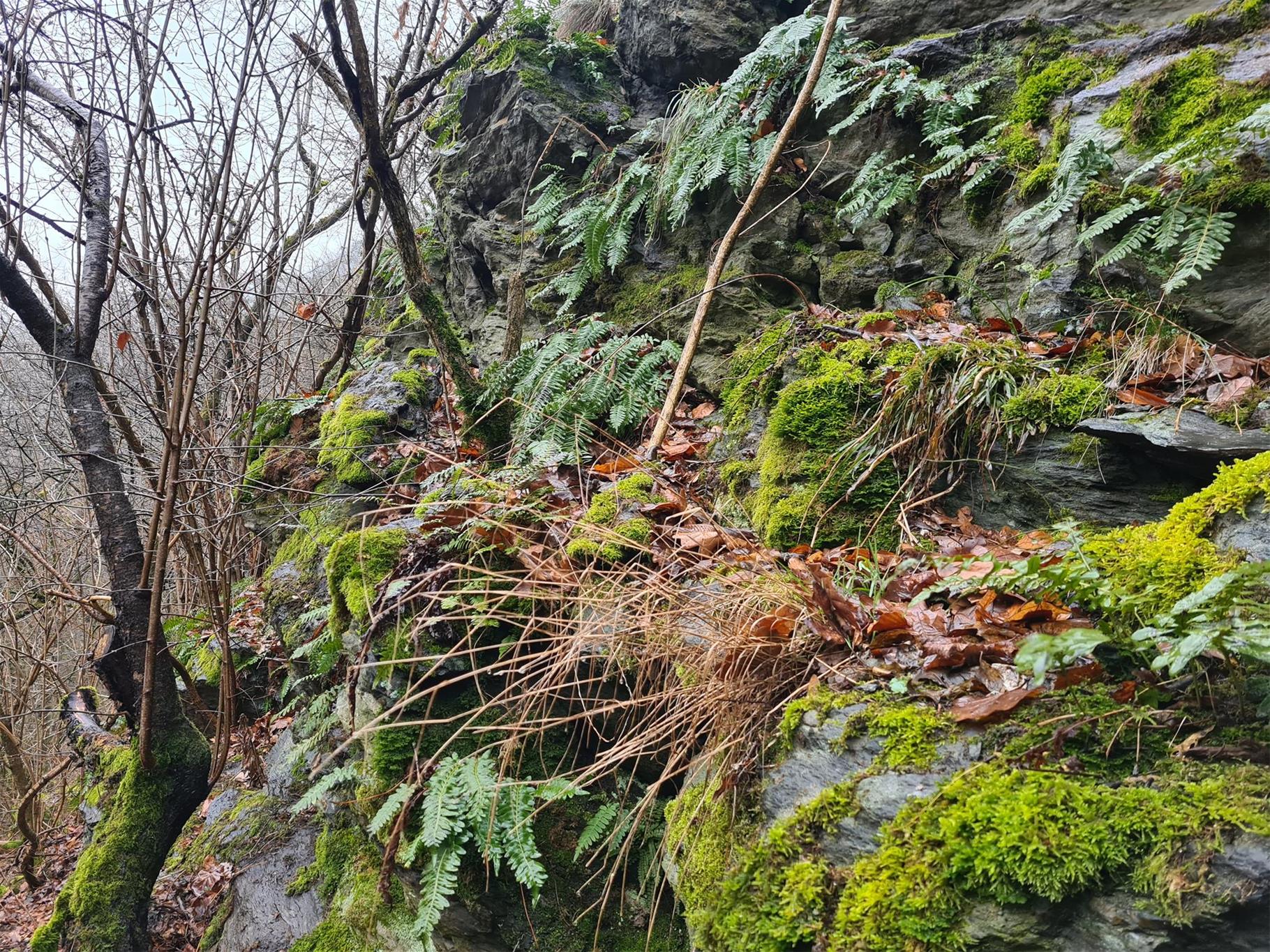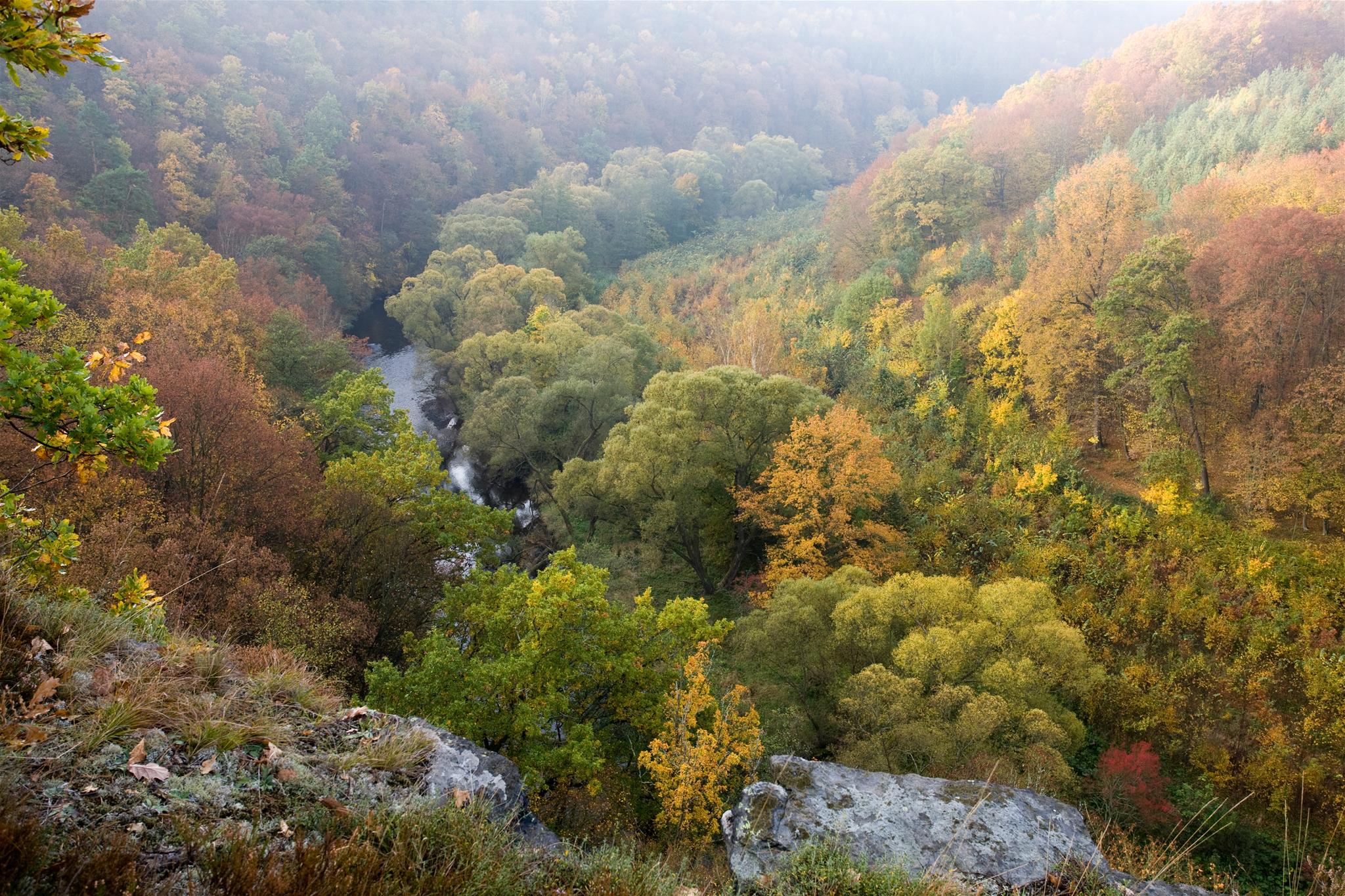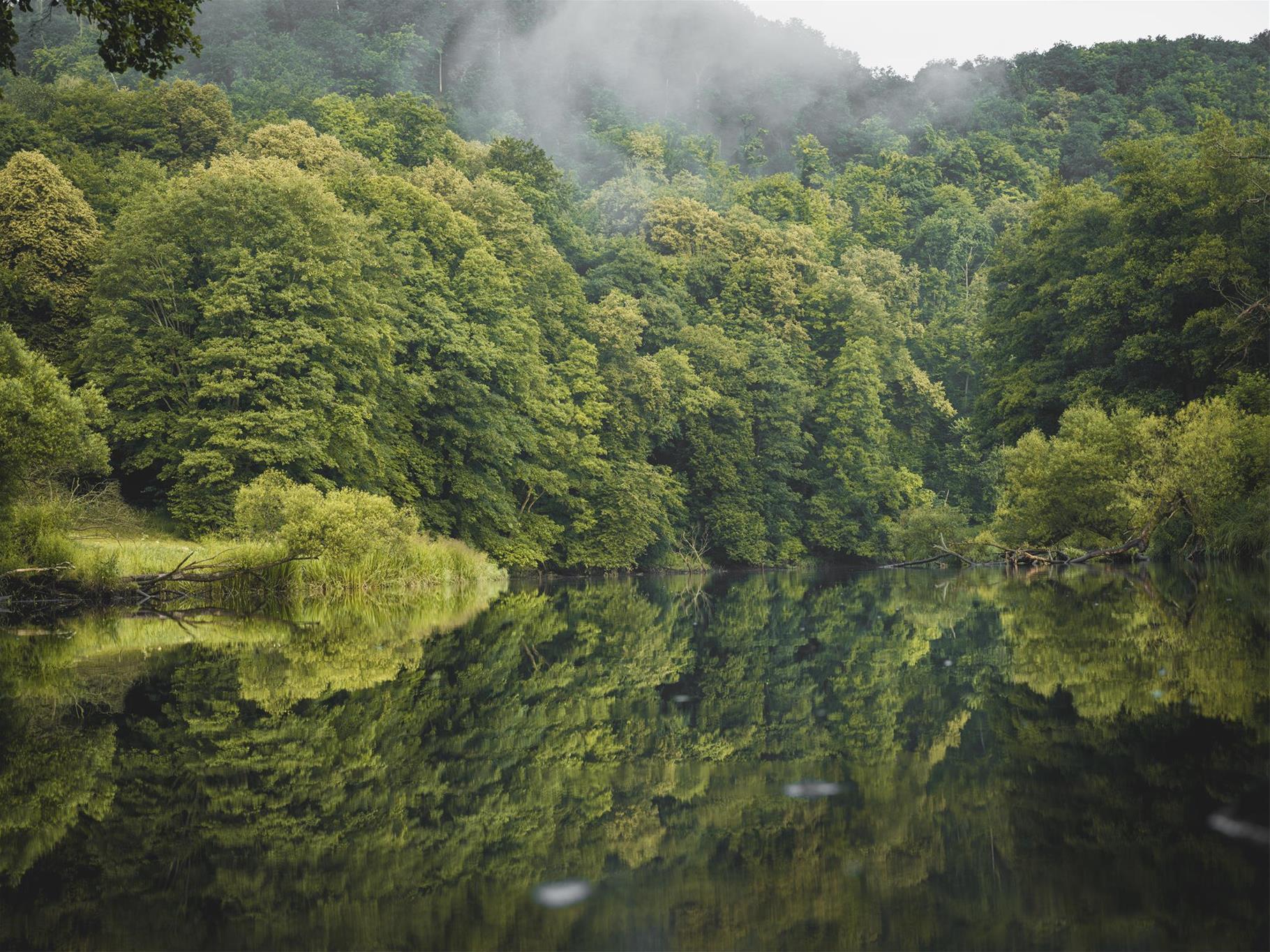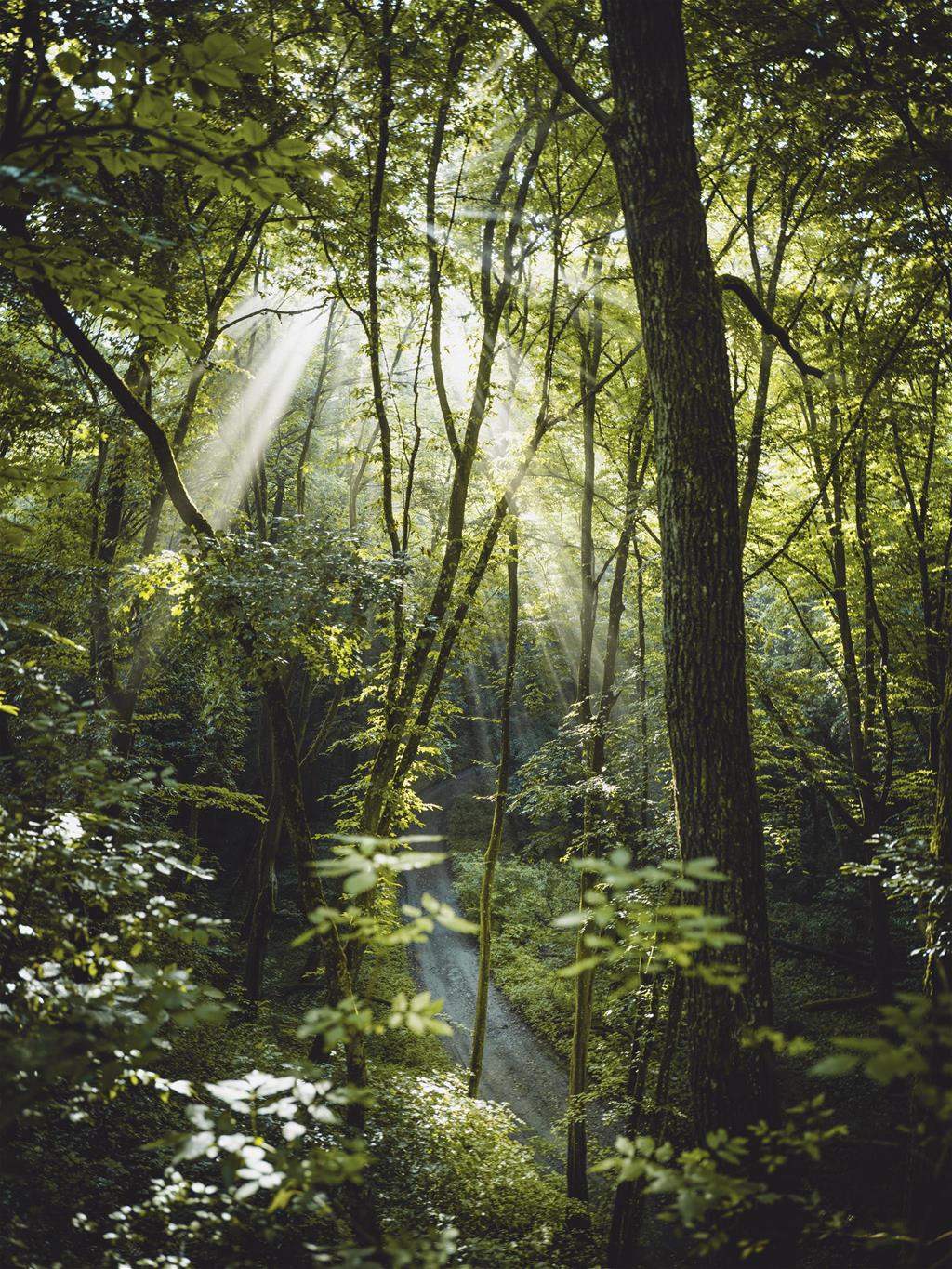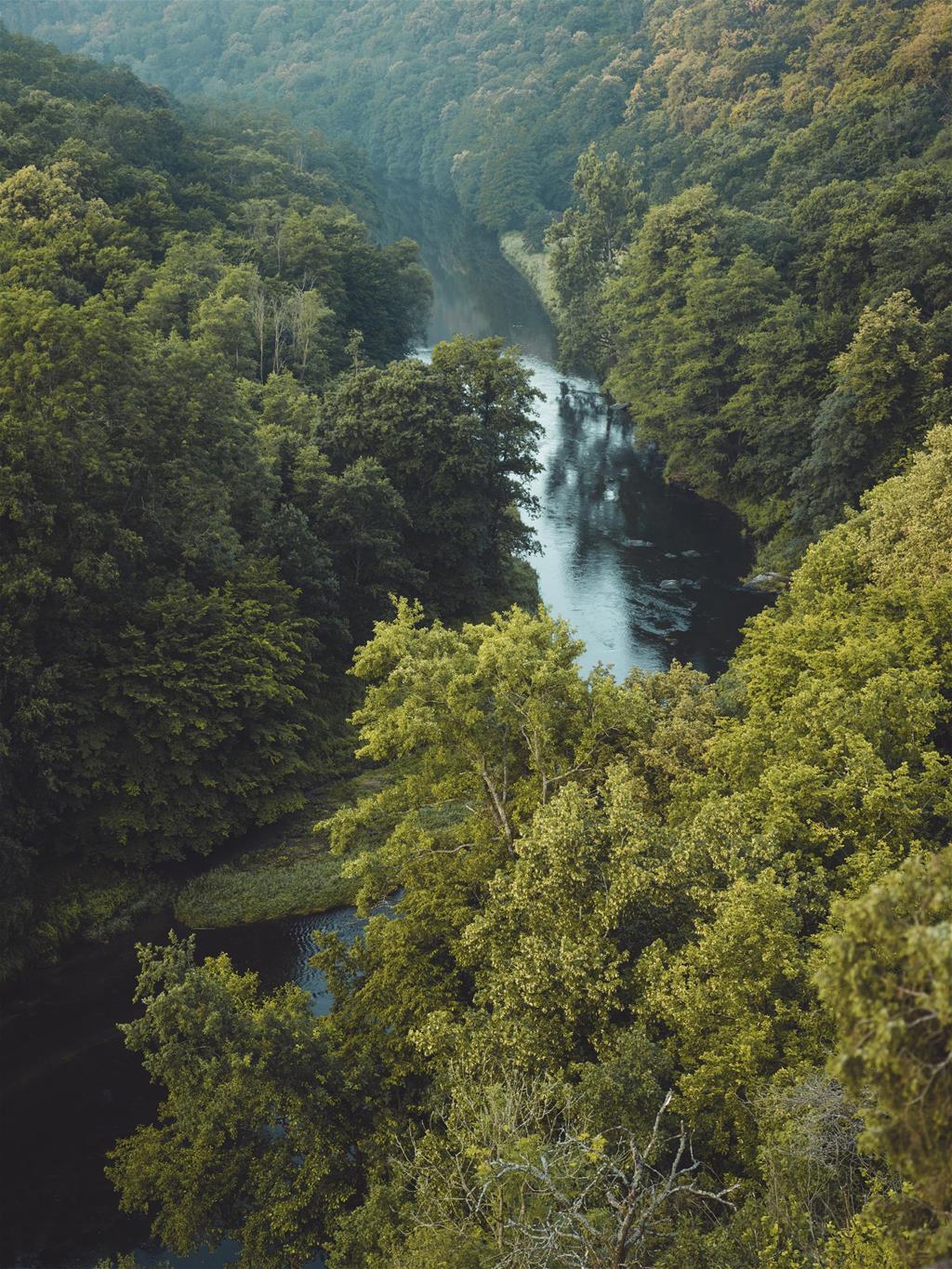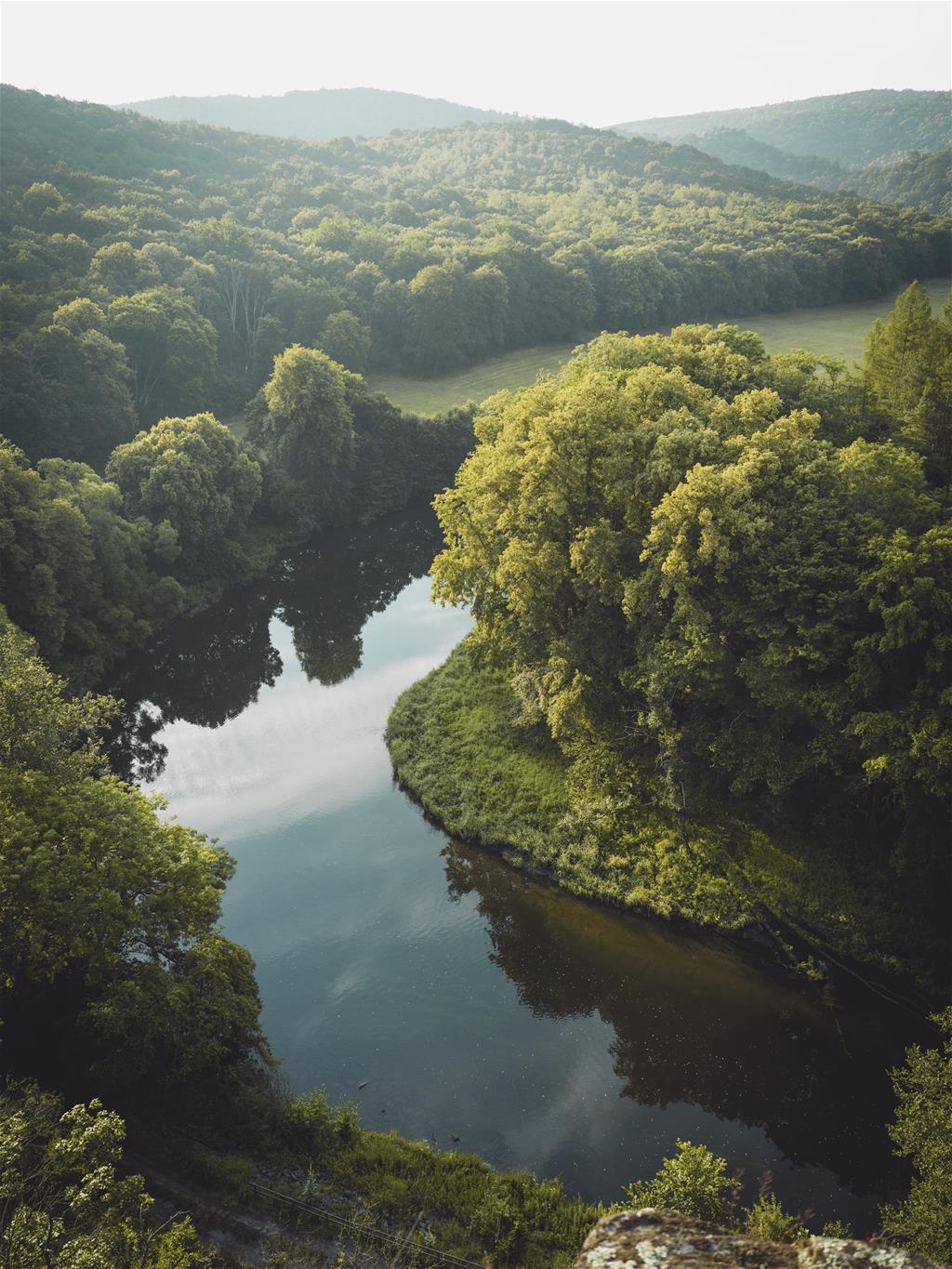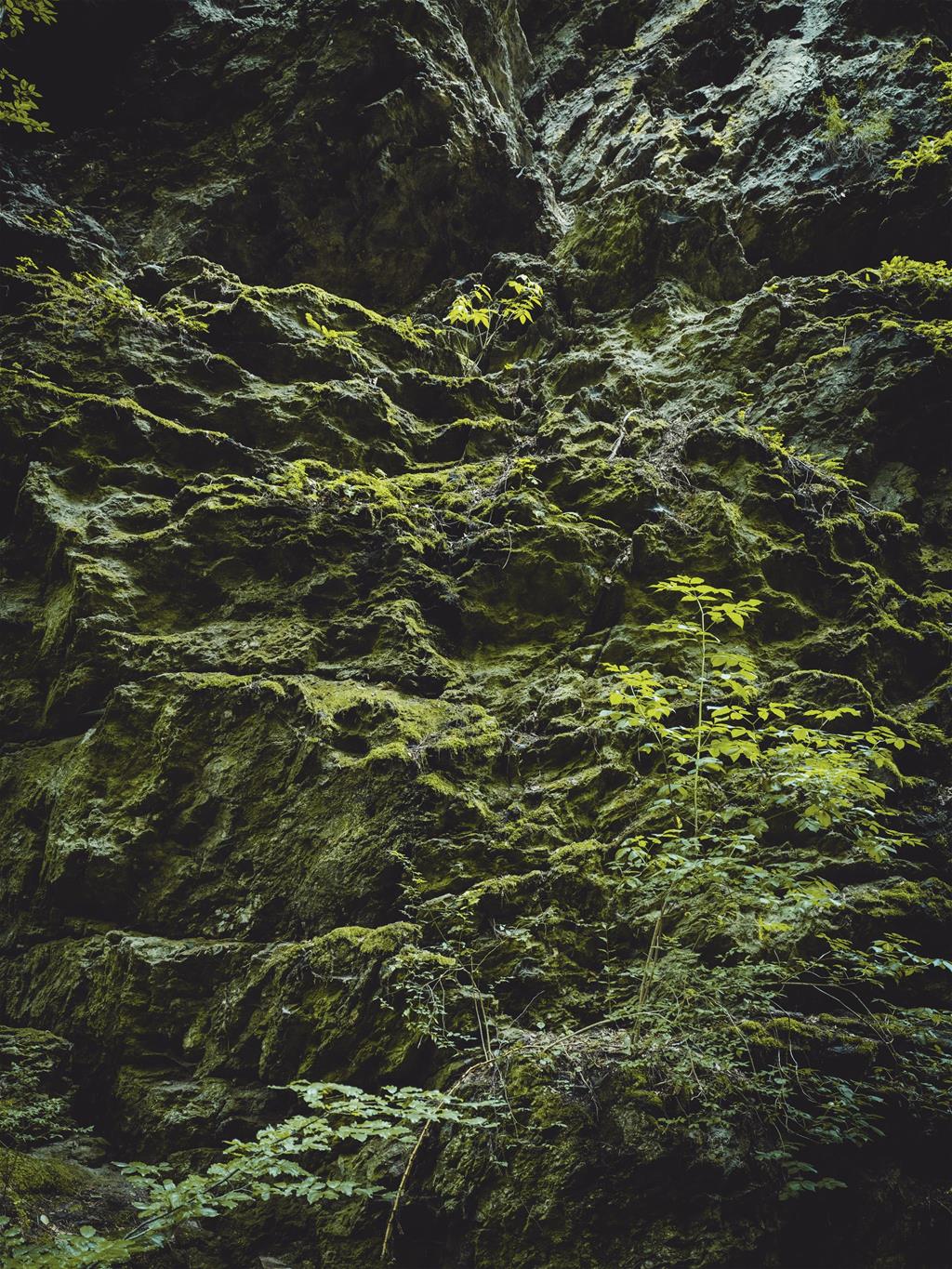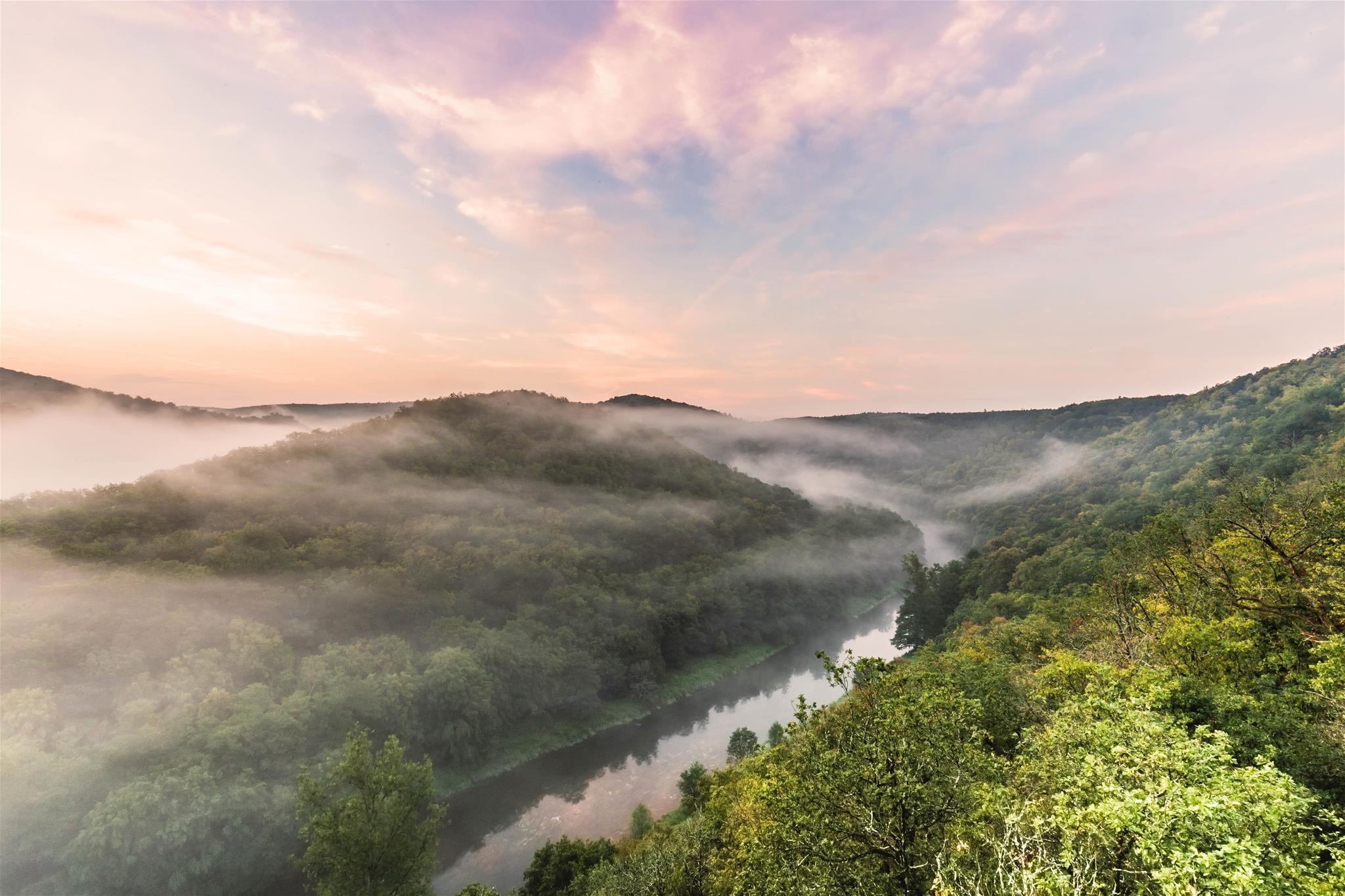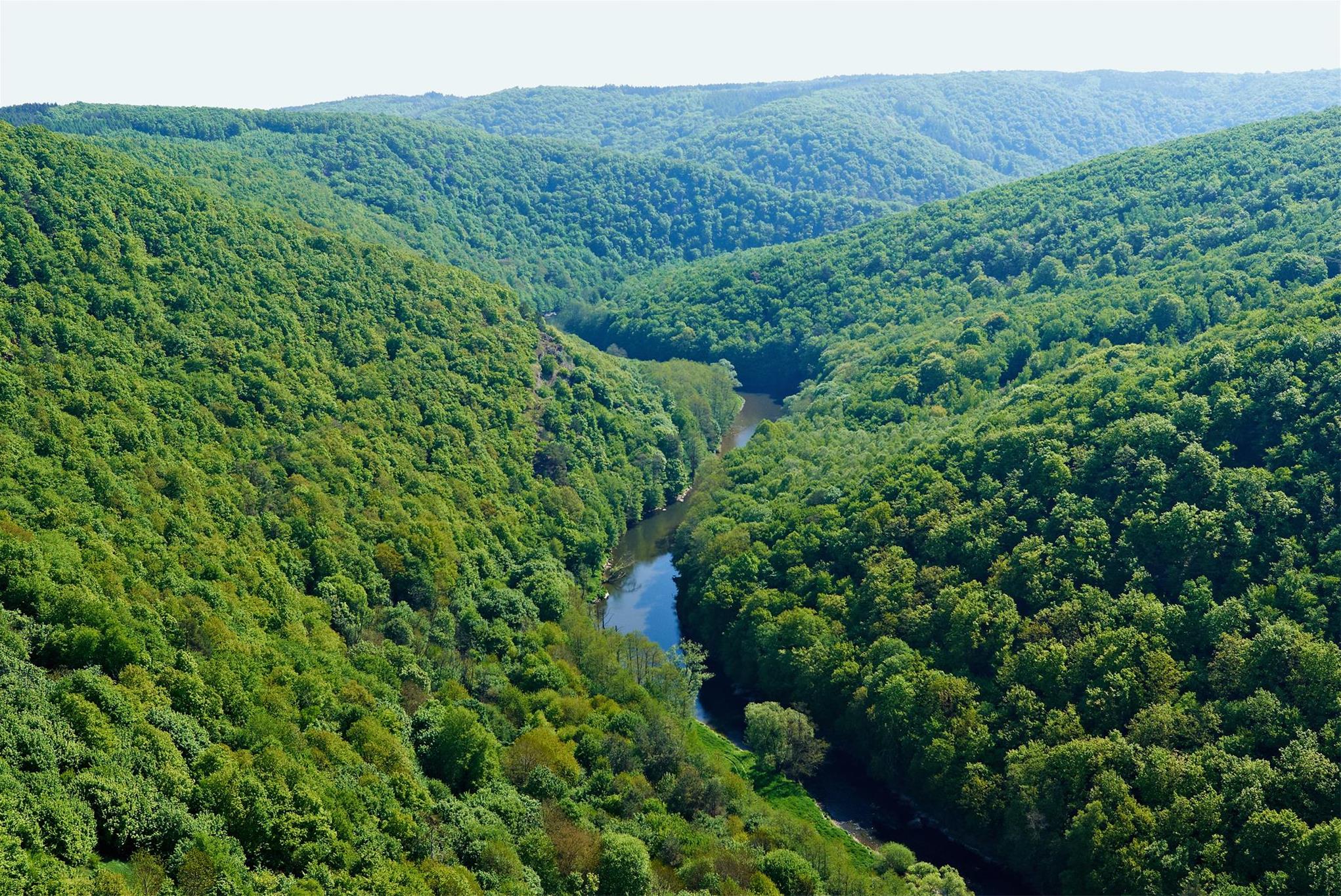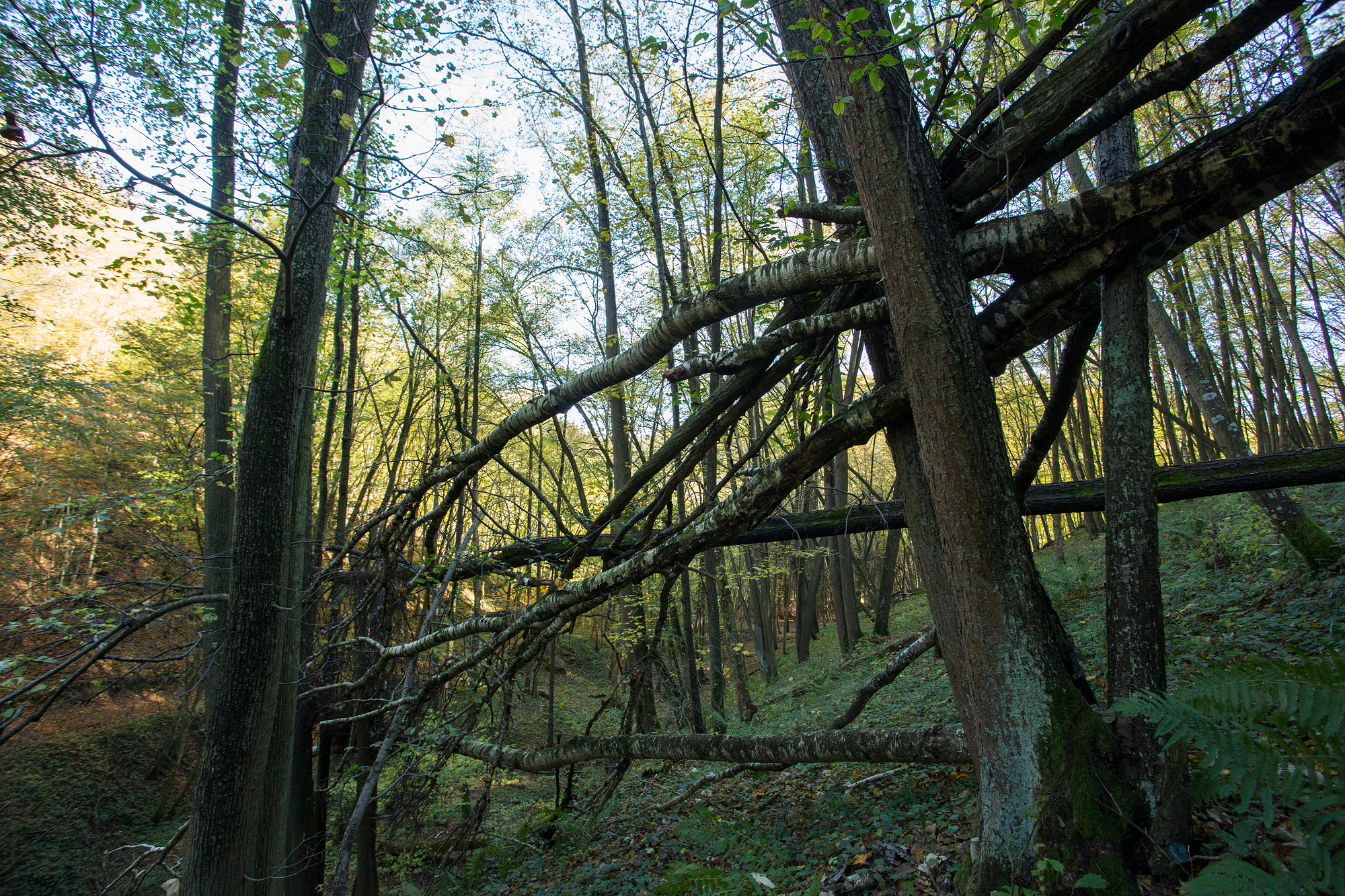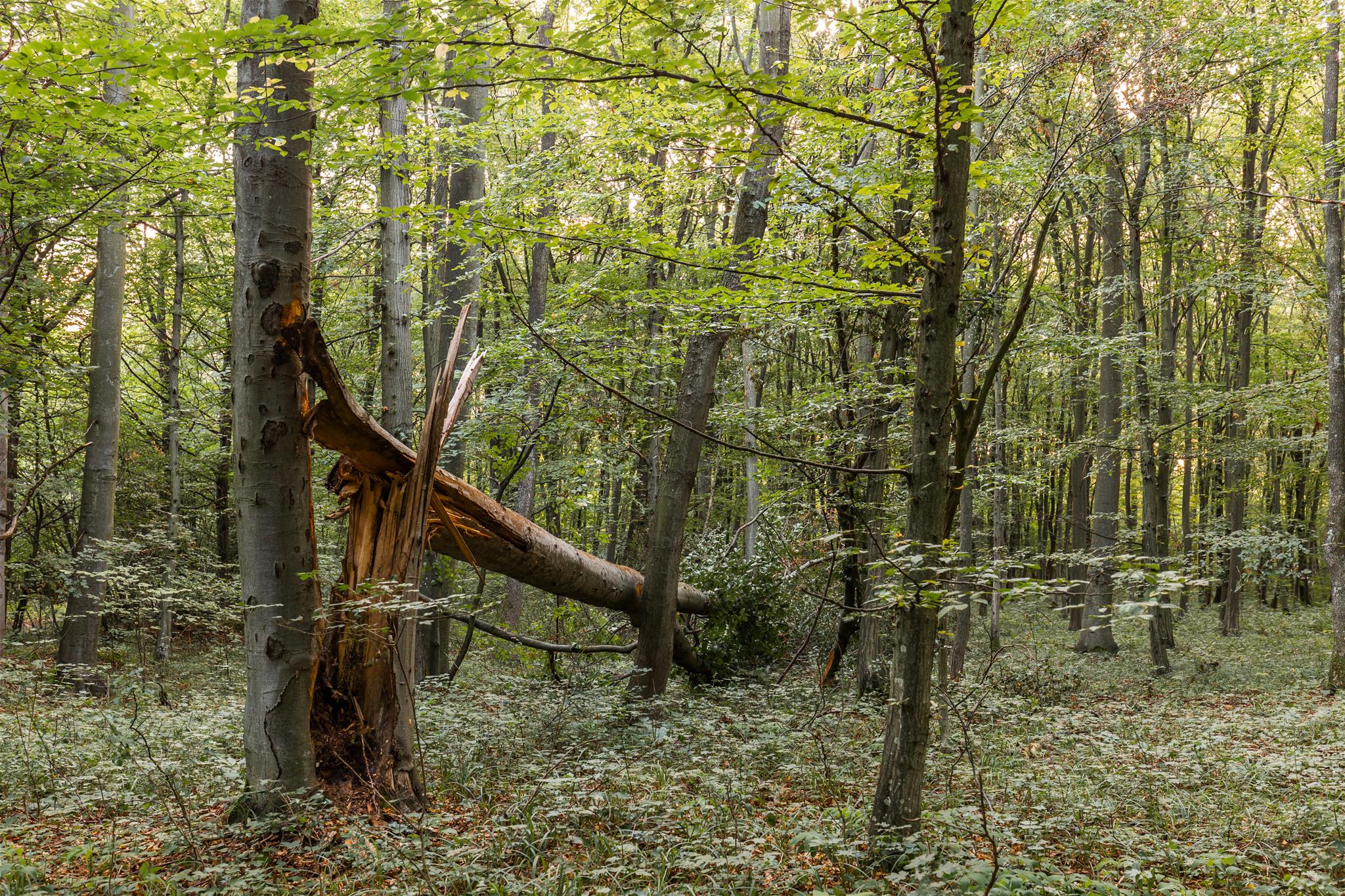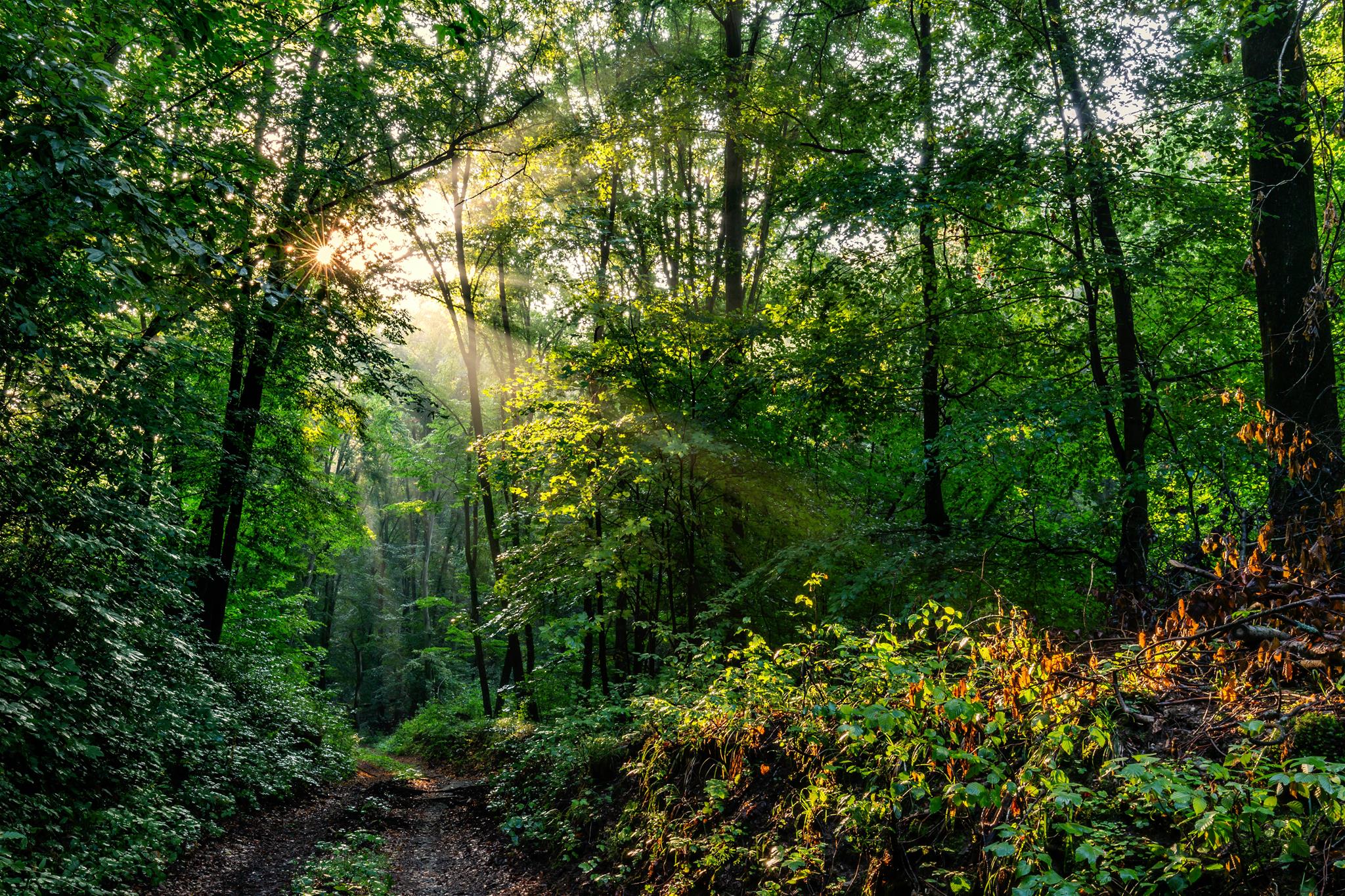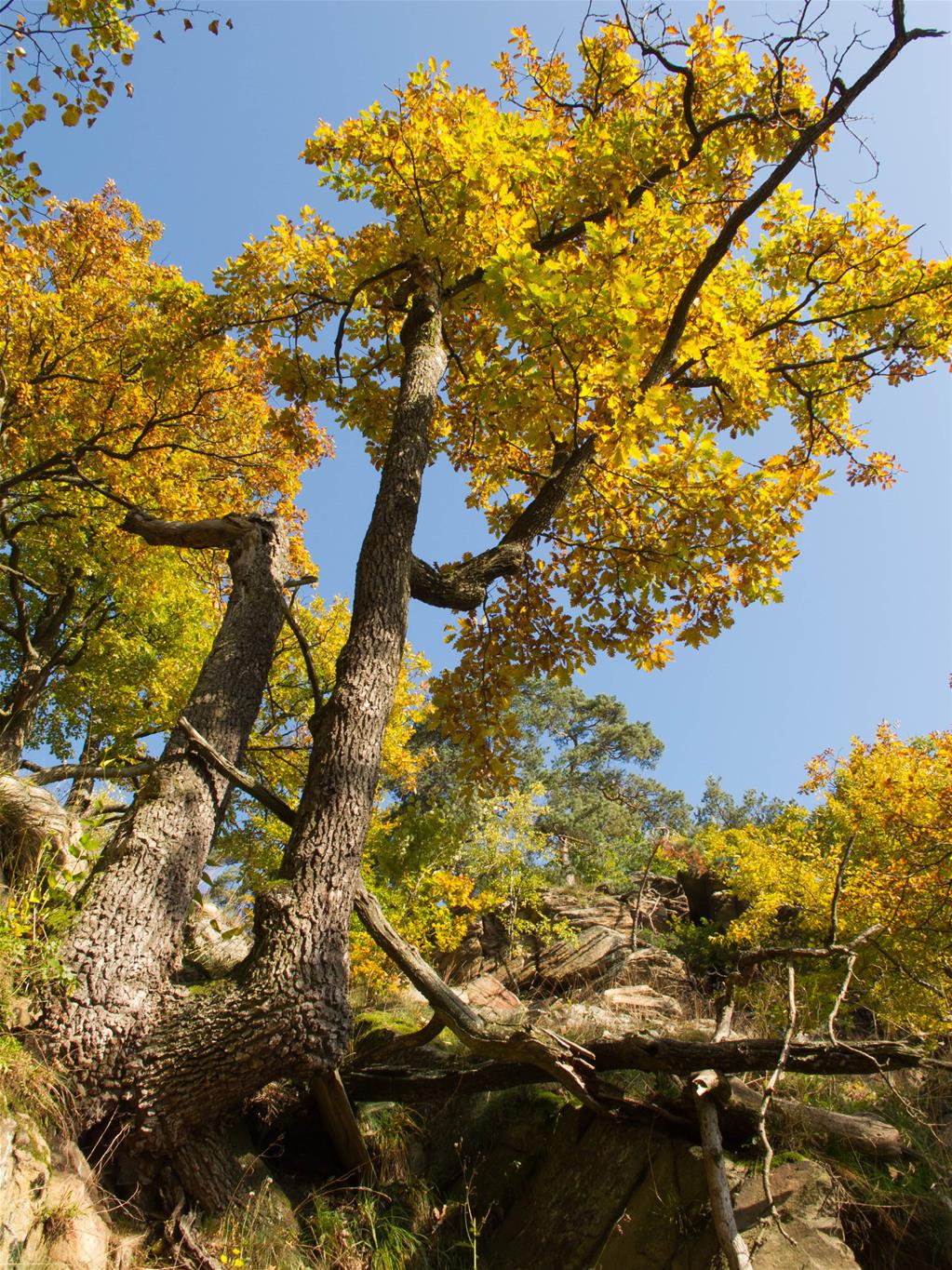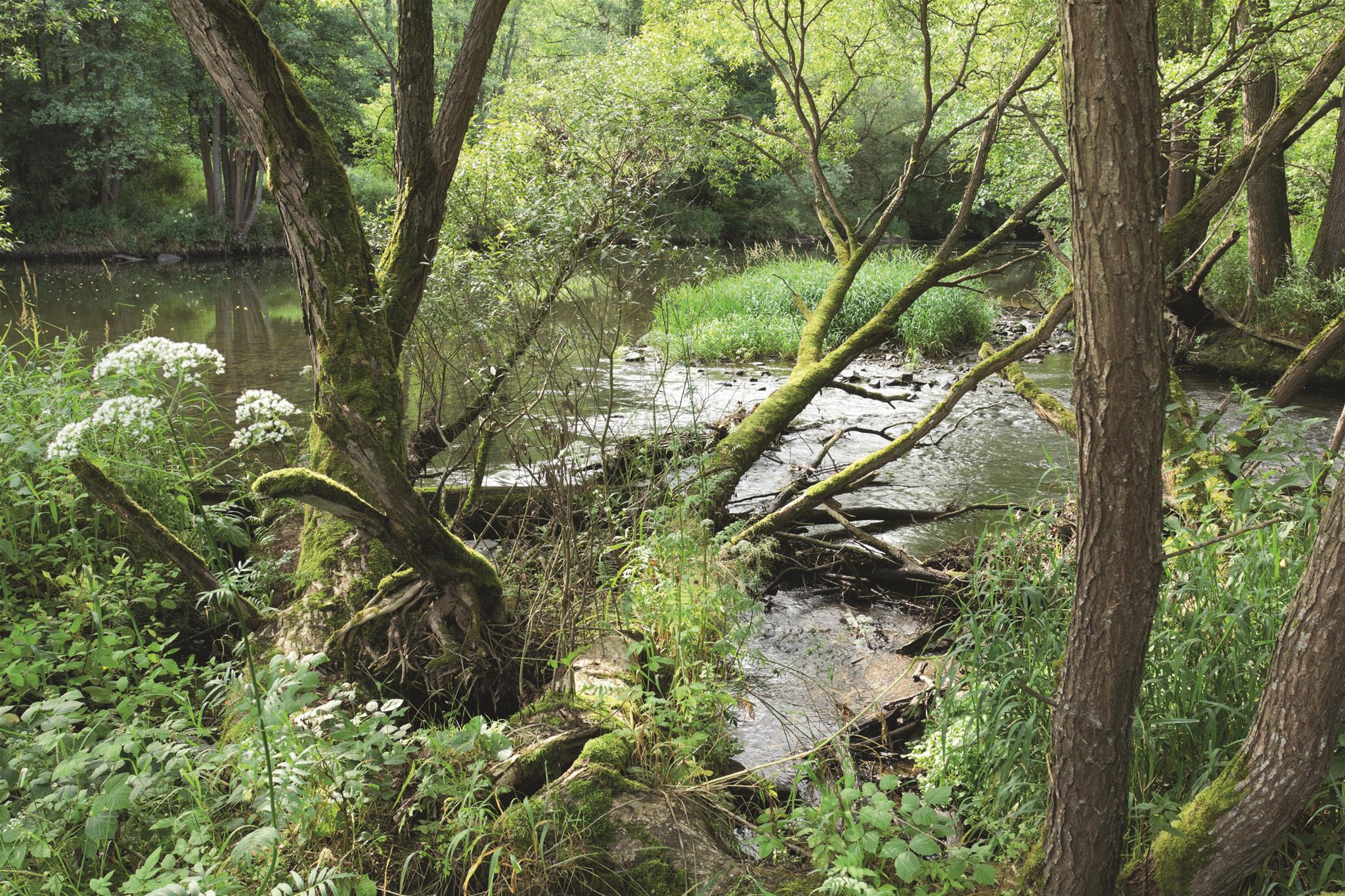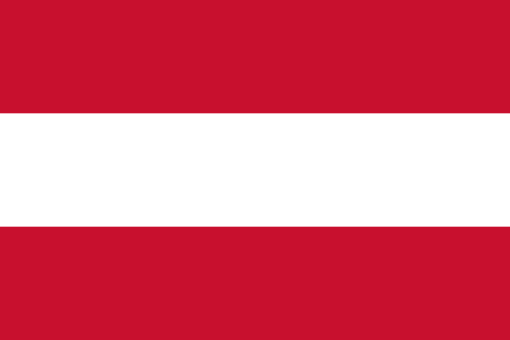Water and Stone
The Thaya meanders over 23.3 km through a unique valley landscape. About 5 to 1.5 million years ago, it dug itself into the metamorphic rocks of the Bohemian Massif as far as 150 meters deep, and thus created one of the most beautiful breakthrough valleys in Central Europe. From the top of the 378 m high Umlaufberg (meander mountain), which is almost entirely surrounded by the Thaya, the unique charm of the Thayatal landscape comes into its own. The diversified geological bedrock with granite, gneiss and schist, of a respectable age of up to 600 million years, is fascinating. In this respect too the National Park is exceptional as these rocks belong to the oldest mountain range in Austria! Near Hardegg alkaline stones can also be found such as calc-silicate and marble.
The Thayatal is one of the last semi-natural valley landscapes in Central Europe. On its way through the National Park, the river is lined with steep banks often with vertical rock slides, wide valley bottoms and a rich mosaic of various habitats.
Dry grasslands - botanical rarities
The dry grasslands on the scraggy, steep slopes and on the rocky plateaus are botanical rarities unspoiled by human hands. Original basement, exposure, inclination and base of the topsoil have led here to the development of a particular high number of plants. The vegetation ranges from rock dwellers and grasslands on stone chippings over dwarf-shrubs (e.g. Scotch heather) and closed grass steppes to forest steppes. Beside anthropogenic, untouched dry grasslands there are also secondary forest-free habitats, which originated through pasturing and which now are partly overgrown with bushes.
Traditional forests - gnarled trees
Over 90% of the surface of the National Park is covered in forests. According to the climate gradient the eastern area is dominated by dry warm oak forests, although these are growing almost entirely on acidic granite. In the western part, the beech forests dominate and are sorted there in populations on lime and granite. Conifers only play a secondary part; red pines (on rocky locations), fir trees, yews and juniper are indigenous. Forestry left its marks in the National Park Thayatal. In particular on the easily accessible plateaus semi-natural deciduous forests have been turned into commercial forests. About 20% of the surface is planted with non-indigenous woods.
Glorious meadows
The approx. 40 ha. of meadows make an important contribution to the biological diversity of the National Park Thayatal. Beside to the traditional rich pastures they are mainly rough pastures rich in biodiversity.
The specific geology and geomorphology of the Thayatal are the reason for the large number of flora, fauna and habitats. Its location at a climatic border between the harsh, humid Waldviertel area and the pannonian continental Weinviertel also accounts for the high biodiversity of the Thayatal. Altogether many rare species of fauna and flora from south-eastern Europe, the foothills of the Alps and central Europe meet in the Thayatal on a relatively small surface.
